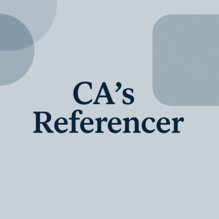25% on India, 19% on Pakistan, 35% on Iraq:
Full list of US tariff rates announced by Donald Trump; who’s worst-hit?
Aug 1, 2025
US President Donald Trump on Thursday signed a sweeping executive order imposing higher tariffs on several nations and the 27-member European Union, significantly escalating his administration’s global trade offensive. The order, titled "Further Modifying The Reciprocal Tariff Rates", is set to take effect from August 7, seven days after its issuance, with rates going up to 41%.
India has been slapped with a 25 per cent "Reciprocal Tariff, Adjusted", one of the higher rates among key US trading partners. The White House justified the move by citing India’s “obnoxious non-monetary trade barriers,” persistent trade imbalances, and strong energy and defense ties with Russia.
While the initial tariff deadline was August 1, the implementation was deferred to August 7 to allow US Customs and Border Protection time to update its systems.
The extension reflects the govt’s need for more time to harmonise the tariff rates, according to a senior official who spoke to Associated Press reporters on condition of anonymity.
Global rebalancing: Some nations hit harder
The tariff hike is part of Trump’s effort to rebalance what he terms unfair trade deficits and national security risks. Countries with large trade surpluses with the US or insufficient strategic alignment have been hit with the steepest increases.
The steepest hikes include 41 per cent on Syria, 40 per cent on Laos and Myanmar, 39 per cent on Switzerland, 35 per cent on Iraq, Serbia and Canada.
In South Asia, India faces a 25 per cent tariff, while Pakistan has been hit with 19 per cent, according to the new Executive order.
The US has announced adjusted reciprocal tariffs on 95 countries and territories, ranging from 10 per cent to 41 per cent, based on trade deficits and strategic alignment.
Tariff Rates by Country: Full list under Trump's executive order
The US has announced adjusted reciprocal tariffs on several countries and territories, ranging from 10 per cent to 41 per cent, based on trade deficits and strategic alignment. Here's what country faces what rate:
| Country/Territory | Adjusted Reciprocal Tariff |
|---|---|
| Afghanistan | 15 per cent |
| Algeria | 30 per cent |
| Angola | 15 per cent |
| Bangladesh | 20 per cent |
| Bolivia | 15 per cent |
| Bosnia and Herzegovina | 30 per cent |
| Botswana | 15 per cent |
| Brazil | 10 per cent |
| Brunei | 25 per cent |
| Cambodia | 19 per cent |
| Cameroon | 15 per cent |
| Chad | 15 per cent |
| Costa Rica | 15 per cent |
| Côte d'Ivoire | 15 per cent |
| Democratic Republic of the Congo | 15 per cent |
| Ecuador | 15 per cent |
| Equatorial Guinea | 15 per cent |
| European Union (Goods >15%) | 0 per cent |
| European Union (Goods <15%) | 15% minus Column 1 duty |
| Falkland Islands | 10 per cent |
| Fiji | 15 per cent |
| Ghana | 15 per cent |
| Guyana | 15 per cent |
| Iceland | 15 per cent |
| India | 25 per cent |
| Indonesia | 19 per cent |
| Iraq | 35 per cent |
| Israel | 15 per cent |
| Japan | 15 per cent |
| Jordan | 15 per cent |
| Kazakhstan | 25 per cent |
| Laos | 40 per cent |
| Lesotho | 15 per cent |
| Libya | 30 per cent |
| Liechtenstein | 15 per cent |
| Madagascar | 15 per cent |
| Malawi | 15 per cent |
| Malaysia | 19 per cent |
| Mauritius | 15 per cent |
| Moldova | 25 per cent |
| Mozambique | 15 per cent |
| Myanmar (Burma) | 40 per cent |
| Namibia | 15 per cent |
| Nauru | 15 per cent |
| New Zealand | 15 per cent |
| Nicaragua | 18 per cent |
| Nigeria | 15 per cent |
| North Macedonia | 15 per cent |
| Norway | 15 per cent |
| Pakistan | 19 per cent |
| Papua New Guinea | 15 per cent |
| Philippines | 19 per cent |
| Serbia | 35 per cent |
| South Africa | 30 per cent |
| South Korea | 15 per cent |
| Sri Lanka | 20 per cent |
| Switzerland | 39 per cent |
| Syria | 41 per cent |
| Taiwan | 20 per cent |
| Thailand | 19 per cent |
| Trinidad and Tobago | 15 per cent |
| Tunisia | 25 per cent |
| Turkey | 15 per cent |
| Uganda | 15 per cent |
| United Kingdom | 10 per cent |
| Vanuatu | 15 per cent |
| Venezuela | 15 per cent |
| Vietnam | 20 per cent |
| Zambia | 15 per cent |
| Zimbabwe | 15 per cent |
'National interests first': Where does India stand amid this tariff flurry
The US has openly linked its new tariff measures on India to frustrations over New Delhi’s continued purchases of Russian oil and arms. US Secretary of State Marco Rubio said India’s energy trade with Russia is “most certainly a point of irritation” in ties, as it helps sustain Moscow’s war effort in Ukraine. While acknowledging India as a strategic partner with major energy needs, Rubio added that Washington is “clearly frustrated” that India continues to buy large volumes of discounted Russian oil despite the availability of other global vendors.
Trump’s imposition of a 25 per cent tariff on Indian goods and an additional penalty for Russian dealings is seen as a sharp expression of that dissatisfaction. Trump also accused India of maintaining “obnoxious” non-monetary trade barriers and failing to open up its market to American goods.
Trump tariffs
The government, meanwhile, has reiterated that it will act in its national interest. The Ministry of Commerce said it is assessing the impact of the new tariffs and penalties, while also emphasising that discussions with the US for a fair and reciprocal trade agreement are ongoing. Five rounds of negotiations have taken place, with a sixth round expected later this month. India has maintained a firm stance on key issues such as agriculture and dairy, where it has resisted US demands for greater market access.
[The Times of India]


